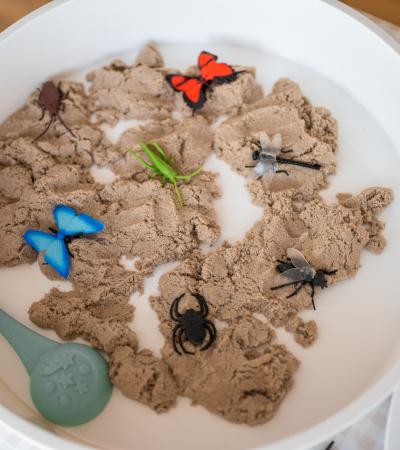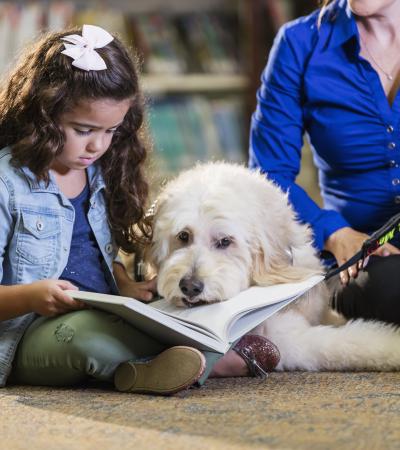The Iditarod — a long-distance sled dog race — begins the first Saturday of March in Anchorage, Alaska. I have been able to teach technology skills, research skills, geography and history through teachings about the race. Students get excited when they find out that the race includes dogs! I ask all teachers to try to include some aspect of the Iditarod in their curriculum during these months. Depending on the grade and class composition, I create projects for the students that include all of the elements of "the last great race."
Advanced Planning
As library media specialist, I teach all students with a full-time aide; I am responsible for developing projects utilizing AASL Standards and Connecticut Common Core Standards. I use Chrome books, Ipads, Smart Boards and lots of good children’s books! I am on a fixed schedule, which means that it is difficult to collaborate with teachers, since I teach their children while they have their mandated prep period. One way around this dilemma is developing all-school projects that include classroom teachers and all special teachers (art, music, physical education).
For the past three years, I have run the Iditarod Immersion program from December to March, both planning and implementing over this period. I begin each year by giving a presentation to the Parent Teacher Association (PTA); I show them the official Iditarod website and explain what I intend to do with the students. I focus on research and fun in explaining my projects; it is important to have the support of the PTA, because that means that the families are going to be involved.
I ask them to support me by giving the school a year’s subscription to the Insider’s Iditarod website. With this subscription, all students and families can see all of the videos, GPS mapping and live coverage of the race. Once I have the PTA's support, I then plan the research and topics for each grade level, and in some cases, for specific classes. What is important is the emphasis on skills and creativity; the students have to challenge themselves to become experts on the race.
Marketing
After I present to the PTA, I then show the third-, fourth- and fifth-grade classes the Iditarod website. Once they see the mushers (the drivers of the dog sled) and the dogs and hear their stories, they are hooked. I also read them excerpts on the history of the race and show them videos on famous mushers (Susan Butcher and Jeff King). I put together an Iditarod Family Packet that I send home with the students in the middle of January. This packet includes a reading and athletic challenge that aligns with the 20 stops that the mushers have to endure during their journey. The teachers also receive an update on what their classes are doing during their library time. Since I meet with students only once a week for 40 minutes, I ask for the support of the classroom teacher to give students additional time to complete tasks for their projects.
Budgeting
The Insider's Iditarod subscription costs $170. This subscription allows a school (multiple teachers and their students) to access both Video on Demand and GPS Tracker on multiple computers.
The only additional costs would be to ship any materials to Alaska, or to create artwork on the Iditarod.
Day-of-event Activity
The project covers weekly activities from the end of December through March. Other than teachers in the school and the PTA, there were no additional adults needed to complete the project.
Program Execution
Included in the three-month project are Skype calls with Alaskan authors and with the "teacher on the trail," a classroom teacher selected to keep teachers up-to-date as the Iditarod progresses, and who creates lesson plans from along the Iditarod trail.
Other related activites vary, depending on the grade level. For example, third-grade students research the official photographer of the Iditarod and create biography books with drawings and writing. They also learn about one musher of their choice, and then make a Google slideshow. I give them a template of what should be on each slide, and they have to find the information and learn how to copy, paste, pin tabs and paraphrase ideas. They also must cite their sources for any pictures and ideas. Fourth- and fifth-graders — who have already studied the Iditarod with me in past years — research three mushers of their choice more extensively. Fourth- and fifth-graders also come up with topics for Iditarod Night, a potluck dinner with families where students present their learning, and during which the community, including the Girl and Boy Scout troops, get together to make blankets for dropped dogs.
Additional activities include a food and blanket drive for the Milford Animal Shelter; a visit from the Humane Society; a corridor-long mural that recreates the race and tracks the five mushers that the school has voted to support; art projects that show the Northern Lights and the dog sleds; physical education challenges that depict the challenges that the mushers face in the grueling 1,000-mile race; a reading competition that aligns with the 20 stops on the race’s route; and fourth- and fifth-grade videos and slide presentations presented to the younger students on Iditarod Day.
Advice
The weakness in this project is the lack of time that the students and I have face to face. They want to create videos and slideshows, but there isn’t always the time to do everything because of school time limitations. My advice is to create time where students have options to work on projects that are important to them.
Supporting Materials
- Feedback (Coming Soon!)
- Programming Librarian Facebook Group



